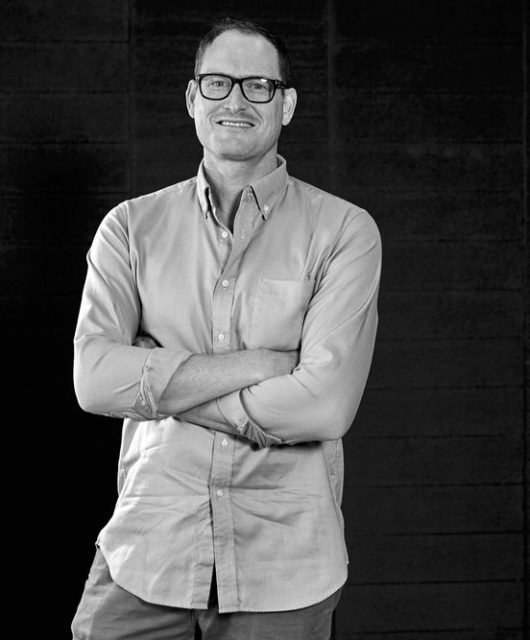The Rising Power of eCommerce: Q&A With Geometry MENA’s Nick Walsh
One of the significant business model developments ignited by digital renaissance is the birth of digital marketplaces, professionally known as ‘eCommerce’. The rise of eCommerce has come with an entire evolution to brands’ experiences, market dynamics and consumer empowerment.
We’ve exclusively interviewed Nick Walsh, Managing Director of Geometry MENA, for his take on how eCommerce can be a growth driver for brands.
BB: The eCommerce market in the middle east has been on a massive rise, unlocking a wide multitude of opportunities for retail and non-retail brands as well. Can you shed some lights on how eCommerce can be a pivotal growth imperative for businesses ?
NW: When we look at digital native brands such as Warby Parker and Allbirds, growing from $0 to $1 billion valuation in under 4 years, the growth potential that eCommerce unlocks becomes obvious. For established brands, eCommerce is an opportunity for growth hacking through creating novel consumption occasions and bringing to life the brand purpose and brand experiences in more meaningful ways. In the middle east, we just started seeing this knowledge transition in understanding that e-commerce isn’t just a channel where an exchange occurs, but actually an opportunity to drive creative and brand growth equally.

BB: Global giants like Amazon and eBay were the trailblazers at the forefront of the eCommerce industry, revolutionizing the whole customer experience equation. What does eCommerce mean for consumers ? and how it’s reshaping the way consumers engage with brands ?
NW: Nowadays, brand stories are much more complex than they used to be. From the scientific differentiation points, to functional and emotional benefits, to social purpose and sustainability. All these elements factor into the purchase decision journey. But the harsh reality is there’s only so much we can communicate on a package, or in-shop when our shoppers are standing on their feet.
On the other hand, the shopper mindset in the comfort of their screen is more open to content consumption, which means brands can connect with shoppers at a much deeper level. It’s a process of both expansion and reduction: Expansion of the phase between buying intent and propensity to purchase, by enriching the journey with relevant content, product information, and brand experiences. On the other hand, conversational interfaces, voice assistants and subscription models are proving to be effective in reducing the friction from propensity to purchase to completing the transaction and maintaining loyalty.
BB: Due to the scaling demand for technology in the online retail scene, brands hand in hand with retailers and wholesalers must implement omnichannel experience strategies. Please comment.
NW: Whether omnichannnel strategies are implemented or not, consumers’ behavior is omnichannel.
When asked about their shopping behaviors prior to making a purchase in a physical retail store, 39% of digital consumers visited a brand’s website, 36% read customer reviews, 33% attempted to price match the product online.
Brands need to develop a deep understanding of the purchase decision journey, and unlock the moments that the brand can elevate and express its best self. In the age of machine learning and programmatic advertising, it’s easy to forget about the human truths involved in the journey. This is why we at Geometry are moving beyond e-commerce, to what we like to call Living Commerce.
BB: What are the considerations brands should consciously be aware of on their road to a successful digital transformation strategy ?
NW: Brands need to truly understand the difference between addition and integration. Digital should not be added to existing processes, but weaved through every single activity. From distribution, sales and operations, to marketing, CRM and BI. Brands need to look inward to their own operations and integrate bespoke digital solutions.
With the fast-pace of development in the digital landscape, brand should integrate digital transformation as an ongoing process, and develop strategic partnerships with organizations that can help them stay ahead of the curve. This is why we are developing our Living Commerce offering as an ever-evolving digital offering helping our partners to constantly align their strategic proposition with the often fragmented, yet complimentary digital building blocks.
BB: eCommerce is undeniably uprising, however retail technology giant brands, like Samsung, have reported that 90% of the buying decisions still happen in store, which defies the whole concept of the power of eCommerce. Please comment.
NW: Even though a vast majority of buying decisions are still happening in-store, digital plays a huge role in the stages leading to the store, and even in-store.
65% of consumers make price comparisons on their mobile device while in a physical store.
With the increasing mobile penetration, the evolution of payment methods and fulfillment chains, 95% of all purchases are expected to happen via eCommerce by 2040 according to Nasdaq. As click and collect, and brick-and-click models evolve, consumers are increasingly juggling between physical and digital in the same transaction. We see e-commerce as a long-term growth strategy complementing brick-and-mortar, where retail offers brand immersion while digital offers frictionless transactions, social validation, and brand storytelling.





